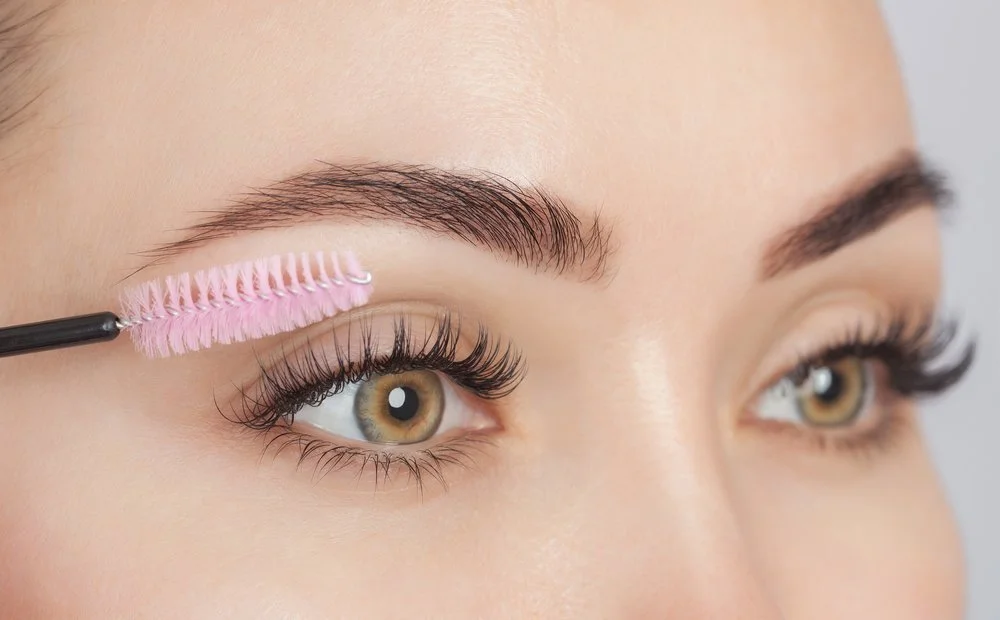The Science Behind Lash Growth: Can Extensions Actually Help?
Hey there, beauty!
If you’ve ever dreamed of having longer, fuller lashes - you’re definitely not alone. Lashes have become more than just a small beauty detail; they’re a powerful way to express confidence and self-care. It’s no surprise that more people in the U.S. are asking how to grow longer lashes naturally and what truly impacts lash health over time.
One of the most popular options today is lash extensions. They offer instant results and a dramatic look with minimal effort. But here’s the big question: Can lash extensions support natural lash growth, or could they actually cause damage over time?
In this article, we’ll explore the science behind lash growth, what really happens when you get extensions, and whether you can enjoy the best of both worlds - beauty and lash wellness.
Understanding the Eyelash Growth Cycle
Before diving into lash care or recovery after extensions, it’s essential to understand how your natural lashes grow. Just like the hair on your head, eyelashes follow a natural lash cycle that includes three main stages: anagen, catagen, and telogen. Each phase influences the overall fullness and health of your lashes.
Anagen (Growth Phase)
This is the active growth stage when your eyelash follicles produce new lashes. It usually lasts between 4 to 6 weeks. The longer this phase lasts, the longer your lashes can potentially grow. Everyone’s natural lash cycle varies, which explains why some people have longer lashes than others.
Catagen (Transition Phase)
This short phase lasts about 2 to 3 weeks and marks the end of active growth. The lash stops growing, and the follicle begins to shrink. If lashes fall out during this phase - due to rough makeup removal or improper lash extension care - they won’t start growing back immediately.
Telogen (Resting/Shedding Phase)
In this final phase, the lash detaches from the follicle and eventually falls out to make room for a new one. This phase can last up to 100 days. Lash shedding during this time is completely normal and healthy.
This natural process explains why eyelash regrowth after extensions can take time. If your lashes seem thinner after removing extensions, they may simply be in the resting phase. With gentle care and patience, healthy regrowth is absolutely possible.
Understanding the natural lash cycle helps you make smarter choices about treatments and products that truly support long-term lash health.
What Are Lash Extensions and How Do They Work?
Lash extensions are a semi-permanent cosmetic treatment designed to enhance the length, fullness, and curl of your natural lashes. Unlike strip lashes that are applied and removed daily, extensions are individually attached to your natural lashes using a special adhesive.
During the procedure, a trained lash technician isolates each natural lash and bonds a single extension - or a lightweight fan - to it. Most extensions are made from synthetic fibers, silk, or mink-like materials designed to mimic the look and feel of real lashes.
The process typically takes one to two hours, depending on the style and volume you choose. The result? A fuller, darker lash line that can last several weeks with proper aftercare.
So why has this treatment become so popular? Convenience plays a big role. With lash extensions, many people find they can skip mascara, eyeliner, or even a full makeup routine. The immediate transformation and low-maintenance results appeal especially to busy lifestyles and special events.
When done correctly and maintained well, lash extensions provide a dramatic, eye-opening effect. However, understanding how they interact with your natural lashes is key to keeping your look both beautiful and healthy.
Do Lash Extensions Affect Natural Lash Growth?
A common question is: do lash extensions ruin your real lashes? Let’s examine what science and dermatology say.
When applied and maintained properly, lash extensions generally don’t cause permanent damage. However, can lash extensions damage natural lashes if worn too long or applied incorrectly? The answer is yes - there are risks.
Heavy extensions or poor application techniques can put excessive weight and tension on the eyelash follicles. This stress may lead to premature lash shedding or weaken follicles, resulting in thinner or sparser lashes over time. Some dermatologists warn that constant pulling or irritation may disrupt the natural lash growth cycle.
This explains why many wonder: are lash extensions bad for your lashes? The reality is that extensions themselves aren’t inherently harmful - but improper care or overuse can negatively affect lash health. Choosing a skilled technician, following aftercare instructions, and allowing lashes time to rest between sets are essential.
Ultimately, understanding how lash extensions interact with your natural lashes helps you enjoy their beauty benefits without compromising lash health.
Eyelash Regrowth After Extensions: What to Expect
If you’ve recently removed lash extensions or taken a break, you might be curious about eyelash regrowth after extensions.
After wearing extensions for a long time, it’s common to notice some temporary thinning or shorter lashes. The added weight and adhesive can cause natural lashes to shed earlier than usual. However, this doesn’t mean your lashes are permanently damaged.
Natural lashes grow back according to their usual cycle, so regrowth can take several weeks to a few months depending on your individual cycle. Patience is key, as lashes don’t grow overnight.
Be aware of signs that might require attention: redness, itching, or persistent lash loss beyond normal shedding could indicate irritation or follicle damage. In such cases, consulting a dermatologist or lash specialist is advisable.
Supporting your lashes with gentle care, avoiding harsh products, and maintaining a healthy routine encourages strong, healthy regrowth after extensions.
How to Grow Longer Lashes Naturally
If you prefer enhancing your lashes without extensions, here are proven natural ways to promote lash health and growth:
Gentle Care for Lashes and Eyelids
Avoid harsh rubbing, tugging, or frequent use of heavy makeup removers. Use a mild cleanser and avoid waterproof mascara that can be difficult to remove. Keeping eyelids clean supports healthy eyelash follicles, creating the ideal environment for lash growth.
Nutrition and Vitamins
Your diet plays a vital role in lash health. Vitamins like biotin, vitamin E, and omega-3 fatty acids support strong hair growth, including lashes. Incorporate foods rich in these nutrients or consult a healthcare professional about supplements to boost lash vitality.
Natural Oils for Lash Nourishment
Applying natural oils such as castor oil, coconut oil, or vitamin E oil can moisturize and protect lashes. These oils strengthen lashes, reduce breakage, and improve lash appearance when used consistently.
Lifestyle Factors: Stress, Sleep, and Hormones
Stress and poor sleep negatively impact hair growth cycles, including your lashes. Aim for regular, restful sleep and manage stress effectively. Hormonal imbalances can also affect lash growth, so sudden changes might warrant consulting a healthcare provider.
By adopting these habits, you can support how to grow longer lashes naturally without relying solely on extensions.
Lash Extensions vs. Natural Growth Methods: Pros and Cons
Here’s a balanced look at the benefits and drawbacks of lash extensions versus natural growth methods to help you make an informed decision.
Lash Extensions
Pros:
Instant, dramatic results.
Saves time on makeup.
Customizable styles from natural to bold.
Cons:
Requires professional application and regular refills (every 2-4 weeks).
Can damage natural lashes if not applied or cared for properly.
Potential allergic reactions or irritation.
Higher cost and upkeep.
Natural Growth Methods
Pros:
Improve overall lash and eyelid health.
Minimal risk of damage or allergies.
Promote sustainable, long-term growth.
More affordable and within your control.
Cons:
Results take time and consistency.
Effectiveness varies by individual biology.
No immediate dramatic effect like extensions.
What Should You Choose?
If you want a quick, noticeable change - lash extensions are an excellent option. If you prioritize lash health and long-term growth, natural methods with proper care are the way to go. For sensitive skin or allergies, start with natural methods and consult a professional. You can also combine both, giving your lashes breaks between extension sets to stay healthy.
Can Extensions Actually Help with Lash Growth?
The bottom line: lash extensions provide immediate enhancement in length and volume but don’t stimulate your natural lashes to grow longer or thicker. Improper use, however, can damage lashes or disrupt their natural cycle.
Used wisely, lash extensions offer a fantastic beauty boost, saving you time without daily makeup. For those focused on how to grow longer lashes naturally, gentle care, good nutrition, and patience are key.
The best approach is an informed, balanced choice that fits your lifestyle and lash health goals. Whether you prefer instant glamour or gradual natural growth, understanding your options helps you take the best care of your lashes.
Choosing between lash extensions and natural growth methods is a personal decision balancing beauty and lash health. While extensions offer instant glamour, caring for your natural lashes with gentle, nourishing habits ensures long-term strength and beauty.
We hope this guide has empowered you to make the right choice for your lashes.
Your journey to healthier, more beautiful lashes starts here - and if you have questions or need personalized advice, feel free to contact us anytime. We're here to help you every step of the way.



